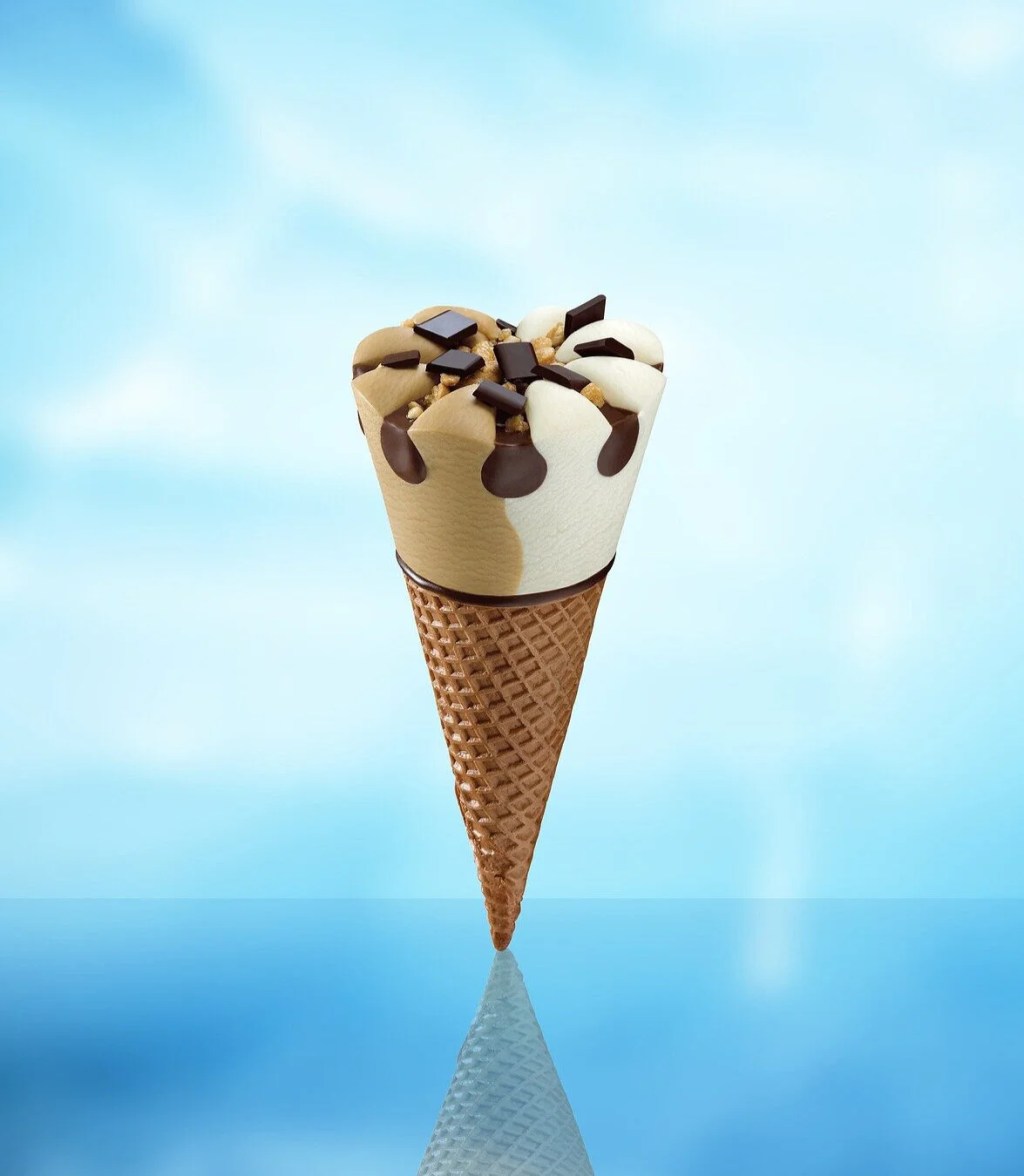Invention in the food and beverage arts is one of my favorite areas – it combines two things I love – patent law and food/beverages. Today we review an invention related to making ice cream treats – Nestle’s application (15/139,863). While not confirmed, the application seems to relate to something that may be an improvement along the lines of Nestle’s Parlour swirled cones.

Specifically, the application relates to a frozen confectionery product with a layered structure, as set forth in claim 1 below:
1. A frozen confectionery product comprising
a container comprising a side, the frozen confectionery product further comprising
an aerated frozen confection extruded into the container, wherein a plurality of substantially thin chocolate patterns are provided in the aerated frozen confection,
the plurality of substantially thin chocolate patterns having a form of at least two substantially helical chocolate layers forming substantially annular parallel chocolate layers each extending across the complete height of the container,
an outer peripheral edge of the substantially annular parallel chocolate layers abuts an interior face of the side of the container, and
the substantially annular parallel chocolate layers each have a thickness between 500 μm and 3500 μm,
the frozen confectionery product has a configuration selected from the group consisting of(i) the container is a tub or cup, and the distance between two parallel chocolate layers is between 8 and 9 mm, and
(ii) the container is a wafer cone, and the distance between two parallel chocolate layers is between 4 and 6 mm.
Nestle’s patent application illustrates the resulting product with two chocolate helixes 46 with two layers of ice cream 40 and 42.

The patent application was rejected multiple times by the examiner and Nestle utilized 3 declarations and an appeal to push the claims through. The examiner relied on a combination of references that allegedly could meet the claim limitations. Nestle’s argument was that the prior art references did not disclose any structure that was capable of making the claimed product. In other words, the cited references, even if combined, simply were not capable of making the product with the claim ranges and structure. The declarations provided technical reasoning which convinced the board that the examiner erred (internal citations omitted):
Appellant’s arguments and evidence are persuasive of reversible error because the three declarations establish that D’Esposito alone or as modified in view of Bertrand is not capable of producing a frozen confectionery product whose chocolate layers are substantially helical annular parallel layers each extending across the complete height of the container and whose outer peripheral edge abuts an interior face of the container side, as recited in claim 1. Declaration I states that using Bertrand’s spray device fails to spray chocolate onto the same location of an extruding ice cream strip because there is relative movement between the spray device and a rotary ice cream extruder. Further, Declaration I shows that Bertrand’s process forms a star or random chocolate layer pattern rather than an annular parallel layer pattern. Declaration I also states that D’Esposito is not capable of producing ice cream with thin chocolate layers as recited in claim 1 because small chocolate flow rates with positive melting points would clog D’Esposito’s depositing device. Indeed, Declaration II states that the insulated passage for chocolate is essential in having chocolate in direct contact with ice cream while both are co-extruded into a container.
A first takeaway here is that it is possible to attack an examiner’s proposed combination as forming a system that simply will not work to produce the claimed elements, but declaration evidence can be key. Mere attorney argument of issues like these, even if following logic, is often dismissed by the Board. But when backed up with evidence, such logic is not so easy to dismiss.
Further, it is instructive to see how the examiner (improperly) dismissed the evidence in the declaration as such is all to common in daily practice:
The Examiner’s dismisses these declarations on the basis that they are directed to different methods and apparatus between the prior art and Appellant’s disclosure, whereas the claims are directed to a product. However, the Examiner fails to properly weigh the declarations in terms of their demonstration that the prior art is not capable of producing the claimed product. In other words, the declarations establish a lack of a reasonable expectation of success in producing the claimed product following the teachings of D’Esposito alone, or as modified in view of Bertrand. Obviousness requires a reasonable expectation of success.
So, there are ways to attack a combination that will not work to achieve the claimed configuration by putting the argument in the context of lacking a reasonable expectation of success. While the reasonable expectation of success arguments are more commonly used in the chemical arts, they apply well to other areas including your favorite ice cream treats.

Leave a comment